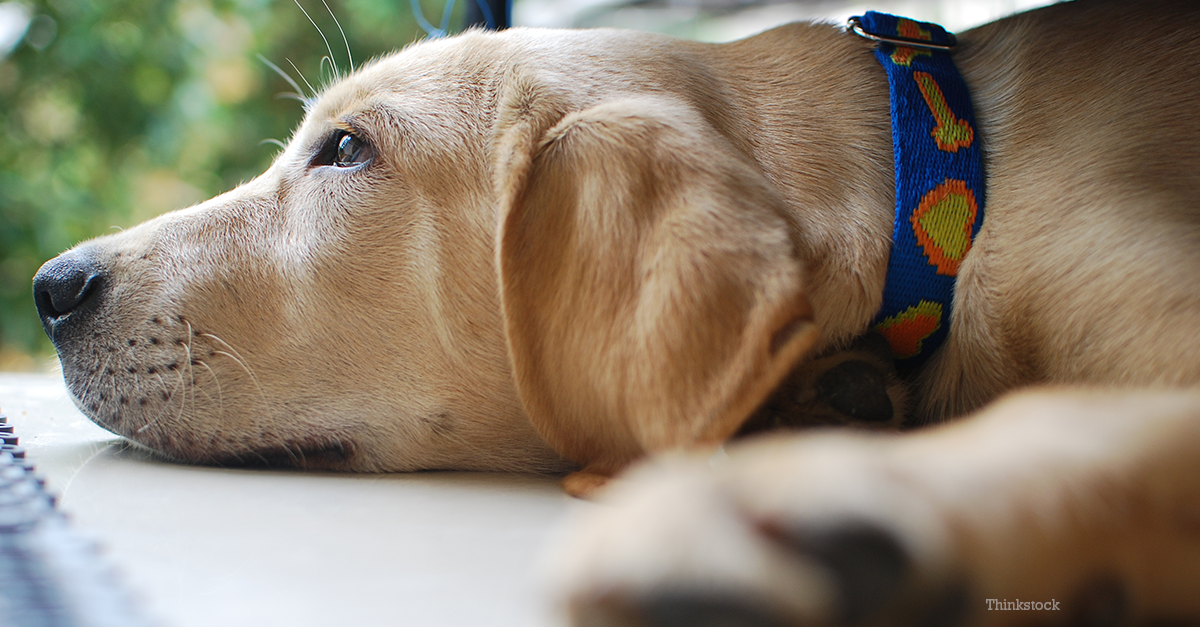How To Teach do Wild Rabbits Eat Mushrooms Better Than Anyone Else

The article below on the subject of Pets is pretty much stimulating. Don't skip it.
Best Advice for Dogs with Skin Issues
I still need to publish a real post about Mr. Stix's full backstory, but this feels more pressing. For nearly 18 months, Mr. Stix's permanent nakey spot (from unknown injuries before he was rescued, including 15 fractures and this big patch of coat missing) has featured several inflamed, peeling areas. Initially I tried to fix it myself at home with things like aloe vera, vaseline, a veterinary ointment called animax that the shelter had give us while we fostered him most of 2019, etc. It's sort of a combination of steroids, antibacterial, and antifungal stuff. I took him to see our main veterinarian in spring 2020, when there was a 2-month wait to get into see a board-certified veterinary dermatologist. It has been quite a journey since then, and it's nowhere near over. Here's my best advice for dogs with skin issues.
Before I tell the ongoing saga with Mr. Stix's skin. Here is my best advice for dogs with skin problems.
See a board-certified veterinary dermatologist as soon as you can. Yes, your main veterinarian can probably help, but it's honestly best to go right to the top experts.
Agree to whatever skin scrapings / cytology the veterinary dermatologist recommends. This provides information about what types of secondary infections currently grow on your dog's damaged skin.
Do NOT assume every skin issue is allergies. It often is some sort of allergic process, but NOT always and assuming so (and acting accordingly may only delay real solutions and subject your dog to all kinds of quack advice and home remedies).
Buy the best quality fish oil and Vitamin E supplements you can afford, if it's recommended for your particular case of a dog with skin issues.
When necessary, agree to the skin biopsies (yes, like minor surgery) and have them reviewed by a veterinary pathologist that specializes in dogs with skin issues. The one we used is at Texas A&M.
Follow your veterinary dermatologist's advice and plans, and keep the faith. These dogs with skin problems often don't improve quickly. (I need to take my own advise. here’s a great blog article below.)
Mr. Stix's Story as a Dog with Skin Problems
This is what Mr. Stix's nakey spot looks like when it's normal. Photo from May 2019 soon after his hip surgery. The bald patch is permanent. That's not the issue.
This is how bad the red / peeling areas got in mid-2020 when we saw our main veterinarian, who added a low-dose of oral Vitamin E and some topical too and told me to keep using the animax.
This is how it looked when Mr. Stix first saw the board-certified veterinary dermatologist in early August 2020, but the specialist had me STOP the animax and instead use a prescription anti-bacterial ointment (mupirocin) ... as well as add a better quality oral fish oil and continue both topical and oral Vitamin E (but at a higher dose twice a day). We knew from the skin scrapings / cytology they did onsite that Mr. Stix had a bacterial infection.
But, without the daily topical steroids (which long term are a bad idea), Mr. Stix's skin got much, much worse -- even breaking open and scabbing over.
Our veterinary dermatologist had recommended doing the skin biopsies right away in August 2020, and I *almost agreed to it then, but I was VERY worried about the cuts resulting in skin that would NOT heal. And, I figured it was at least worth a try to use the prescription antibiotic ointment and other supplements and stuff.
But, by around Thanksgiving, it was clear we had to do the biopsy. That photo is kind of gruesome, so you can see it here, if you want. I wish I had done the biopsy sooner. I feel like I wasted time from August through November.
Post-Biopsy Diagnosis
As I expected, despite all the know-it-alls trying to tell me it was an allergic issue, it turns out that Mr. Stix instead has an autoimmune condition called erythema multiforme. They believe it was triggered by the trauma of his earlier injuries. They don't think it is life-threatening. They don't think it will spread to other areas of his skin. Just the already damaged, permanent nakey spot.
With that information in hand, we updated the treatment plan to include a topical, non-steroidal anti-inflammatory ointment (tacrolimus -- often pricey, but we used a Good RX coupon at Costco to get the cost down). They use a version of this medication orally for people who have had various kinds of transplants. It's the smallest / safest option for treatment, and that's where we started.
I was so hopeful it would work at the once-daily application, but the skin still didn't heal completely.
So, in early 2021, we started applying it twice daily on the advice of our veterinary dermatologist.
But, it still hasn't healed completely. It often improves a lot and then comes roaring back, so we had another appointment to see the specialist last week. We had to try something new.
Enter the Big Immune-Suppressing Drug
Despite my concerns and form of veterinary PTSD about major immune suppression drugs (after our experiences with Lilly), I agreed last week to add oral cyclosporine, which is also a drug that people get after various transplants. Mr. Stix would need to take it daily for life.
It smells like it's made from skunk butts, so each gel-cap pill is individually packaged, and you keep them in the freezer because that can help with nausea it can cause (since it's recommended you give on an empty stomach).
I found some good info on this med, and our veterinary dermatologist assured me that it has been safely used in veterinary medicine for like 20+ years, etc.
The med only comes in doses of 25 mg, 50 mg, and 100 mg, and at his size Mr. Stix's ideal dose is around 88 mg once a day. So we went with 75 mg (25+50) to err on the lower side.
It takes like 3-7 days for the med to build up in the blood to therapeutic levels, but it takes more like 4-6 weeks to know if it's going to help the skin (or not).
We made it to day 4, then the barfing started.
Anxiety
I wish I could say that this is all going to be fine, but I just don't know. I feel like I just have to accept that the skin will never fully heal, even though seeing his raw spots up close while applying the topical med twice a day and topical Vitamin E once a day causes me so much angst and anxiety.
I supposed to check in with our veterinary dermatology team next week to confirm that Mr. Stix's weirdness and apparent suffering has improved.
It took a lot of convincing to get Mr. Champion of My Heart to agree to try the cyclosporine, so even if the specialist comes back and recommends maybe a lower dose, I doubt we'll want to risk it ... because Mr. Stix sure seemed to be having some neurologist issues to me, and after the Lilly situation, I just cannot do that again.
He is only 3 years old. I don't want to make anything worse. It honestly felt like I'd poisoned him.
The good news is that most of the time his skin doesn't seem to hurt or itch or anything -- though I do have pain meds, if he needs them. It mostly just looks bad, and he has to wear a no-lick collar for about 20 minutes after I apply his meds so that he doesn't lick it off.
His nakey spot is prone to sunburn anyway, and the topical tacrolimus increases the risk of burning, so I used his earlier sun-reflecting coat (which started to look ragged) as a pattern and sewed him a new / light sun protection coat. He looks very cute in it.
https://championofmyheart.com/2021/08/05/dogs-with-skin-issues/
Tips You Should Know When Dealing With Dogs
Your dog is always there for you. No matter what, a dog will do what it takes to make sure you are alright. He always looks out for you, always wants your attention, and is always happy with you. Shouldn't you see what you can do for him? Here are some tips to help you be a great owner for your dog.
Avoid insisting that your dog socialize nicely with every other passing dog. Experts recommend that your dog be able to tolerate introductions through sniffing and eying with another animal, but say forcing the issue can create problems. Accept your dog's lead when meeting and greeting other animals and allow for natural interaction.
Keep on top of fleas. Not only can fleas cause infection in your dog, if one is swallowed, your pet can get tapeworms as well. Speak to your veterinarian about the best prevention method, but remember that this is not a one shot deal. You will have to continue your efforts over the life of your pet.
As soon as you notice your dog engaging in bad behaviors, immediately try to correct them. If you ignore it, it will be hard to contain it later. This could lead to huge problems down the road.
Don't assume your toy-sized dog's bite isn't dangerous, just because he's little. A lot of owners brush-off training, thinking that the smaller breed dog can get away with a little bad behavior and this isn't true. As a responsible canine master, you've got to make certain your dog does not pose a threat to anyone by having him well trained.
Be a good neighbor and discourage your dog from barking, unless he is alerting you to danger. Most people get used to the sound of their dog yelping, but others find it a constant annoyance. If your dog barks often, consider talking to your vet about what could be causing it and how you can put a stop to it, for everyone's sake.

If your dog spends a lot of time alone, think seriously about adding a second animal to your family. Dogs are usually in packs by nature and this means they enjoy being around one another. By choosing another dog that matches your pup's energy level and temperament, you'll ensure that your dogs will be great companions for each other.
Always make sure to keep your dog's annual vet visits. Vets can detect diabetes, kidney, and thyroid issues before you see signs. Annual dog physicals can spare lots of money later for owners and keep them from suffering now.
If your vet has given you medication or special instructions for your dog, make sure that you follow them. He might not want to wear that cone on his neck and head, but it's there for a real reason! Your vet makes recommendations that will help your dog be happy and healthy, so you should follow your vet's advice.
Keep your dog safe from dangerous chemicals. Similar to kids, cleaning chemicals and any car maintenance substances are harmful to them. These substances are poisonous, so if a dog gets any on them or ingests any, they could get burned, become very sick, or die. Store your hazardous chemicals in a place that your dog can't get to, or keep them in a closed area using a child-proof lock.
Be strong when the time comes to say goodby to your beloved dog. Many owners keep the animal suffering to keep them in their lives and that's not fair to the dog. Consult with your vet, then talk it over with family. If it's time to part ways with your dog, do what's best for him.
When choosing to introduce a new pooch to a home that already has one, it is best that you bring your current dog along to meet him. This will give them a chance to socialize together. If you find that your dogs are compatible, a lot of anguish and trouble can be saved.
Keep your dog safe from dangerous chemicals. Similar to kids, cleaning chemicals and any car maintenance substances are harmful to them. These substances are poisonous, so if a dog gets any on them or ingests any, they could get burned, become very sick, or die. Store your hazardous chemicals in a place that your dog can't get to, or keep them in a closed area using a child-proof lock.
If you have younger children in the home, make sure that you try to teach them what behavior is appropriate with your dog. Let them know the rules and what they are allowed to do. https://petsroof.com/can-rabbits-eat-mushrooms/ are more tolerant of being jumped on, pulled on, and played with than other dogs.
Your puppy may be cute when it starts nibbling slippers, but it will not be when it's older and chewing them to bits. The sooner you stop bad habits, the better. If your dog is doing something that it shouldn't, don't ignore it. You will be saved much trouble down the line.
Curb your expectations when it comes to your dog. When you train your dog, remember his attention span isn't like yours. Try training your pet little by little. Don't try to teach it too many things all at once, and be patient. This will help you to be sure that your dog doesn't associate training with being punished.
If you are training your dog to not pull when on the leash, you should invest in a quality collar and leash. If you have a larger dog, the force of it pulling might be able to break basic collars and leashes. For this reason a good, strong collar is recommended when you are walking your pup.
Make sure that you carry small bags and gloves with you while you are out walking your dog. If he uses the bathroom outside, it is your responsibility to clean up the mess. It is unsanitary for you to leave it there, and it some places you may receive heavy fines for that.
Now that you understand the undertaking of owning a dog, you should feel confident in the fact that you can now provide for your pet fully. When he pees on the floor, forgive him. When he barks at the moon, bark with him. And when he gives you a big kiss, return the favor!
We hope you enjoyed reading our topic on Pets. Many thanks for taking a few minutes to browse our piece. Do you know about anybody else who is looking into the topic? Do not hesitate to promote it. I take joy in your readership.
